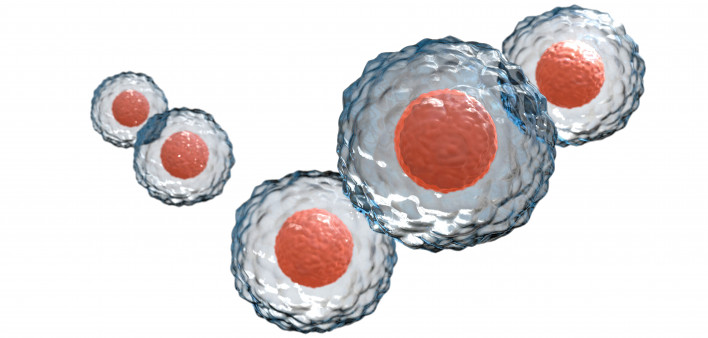Three cases of HIV being cured have been reported to date. All three involved men with HIV and either leukemia or lymphoma. The men received transplants of stem cells from adult donors to treat their cancers. The stem cell donors all carried two copies of a mutation, CCR5-delta32, that confers resistance to HIV. CCR5 is a receptor that HIV uses to infect cells. But very few people carry two copies of CCR5-delta32, limiting the chances of finding a compatible donor, particularly for non-White patients.
A team led by Drs. Jingmei Hsu at Weill Cornell Medicine, Yvonne Bryson of the University of California, Los Angeles, and Deborah Persaud of the Johns Hopkins University School of Medicine used a modified approach to try to cure HIV. Their patient was a middle-aged woman who self-identified as mixed-race and had both HIV and fast-progressing, or acute, leukemia. Because of the difficulty in finding a compatible adult donor, the transplant included stem cells from banked umbilical cord blood. Umbilical cord blood stem cells don’t need as close a match for successful transplant as adult stem cells. If successful, this approach could expand the pool of CCR5-delta32 stem cells available to those living with HIV.
The researchers obtained cord blood stem cells with two CCR5-delta32 mutations that were a partial match for the patient. A challenge with transplanting cord blood stem cells is that it takes time for the cells to engraft in the body. So, the researchers infused the cord blood cells alongside stem cells from a relative of the patient. These did not carry the CCR5-delta32 mutation but were partially compatible with the patient. In this type of transplant, the adult stem cells engraft quickly, but temporarily. This allows them to provide some immune function until the cord blood cells have a chance to take over. Results appeared in Cell on March 16, 2023.
As expected, the relative’s stem cells engrafted quickly, within two weeks of transplant. But by 14 weeks after transplant, the cord blood cells had completely taken over. A major risk associated with stem cell transplants is graft-versus-host disease—when transplanted immune cells attack the recipient’s body. But cord blood cells are less likely to do so and, in this case, the patient did not develop graft-versus-host disease.
The patient’s leukemia remains in remission more than five years after the transplant. Before the transplant, she controlled her HIV infection with antiretroviral drugs, but some HIV genetic material was still detectable. After transplant, no HIV DNA or RNA were detected. By a year after the transplant, she no longer had antibodies against HIV, which suggests HIV was no longer replicating in her body. Also, after the transplant, the stem cells in her blood resisted infection by various HIV strains in the lab.
About three years after the transplant, the patient stopped antiretroviral therapy. At the time the study results were written, 18 months after stopping treatment, the patient remained free of HIV infection. The researchers say she has now remained free of infection for nearly 30 months.
These results suggest that the cord blood stem cell transplant may have cured the patient of HIV. This would make her one of only four such patients, and the first woman to be so cured. Stem cell transplant remains a complex and risky procedure. It is only considered in people who need one to treat a life-threatening condition, such as leukemia—not to treat HIV alone. Even so, in people with HIV who do need a transplant, using cord blood stem cells could expand access to this treatment.
“It’s exceedingly rare for persons of color or diverse race to find a sufficiently matched, unrelated adult donor,” Bryson says. “Using cord blood cells broadens the opportunities for people of diverse ancestry who are living with HIV and require a transplant for other diseases to attain cures.”
This research summary was published by the National Institutes of Health on March 28, 2023.







Comments
Comments